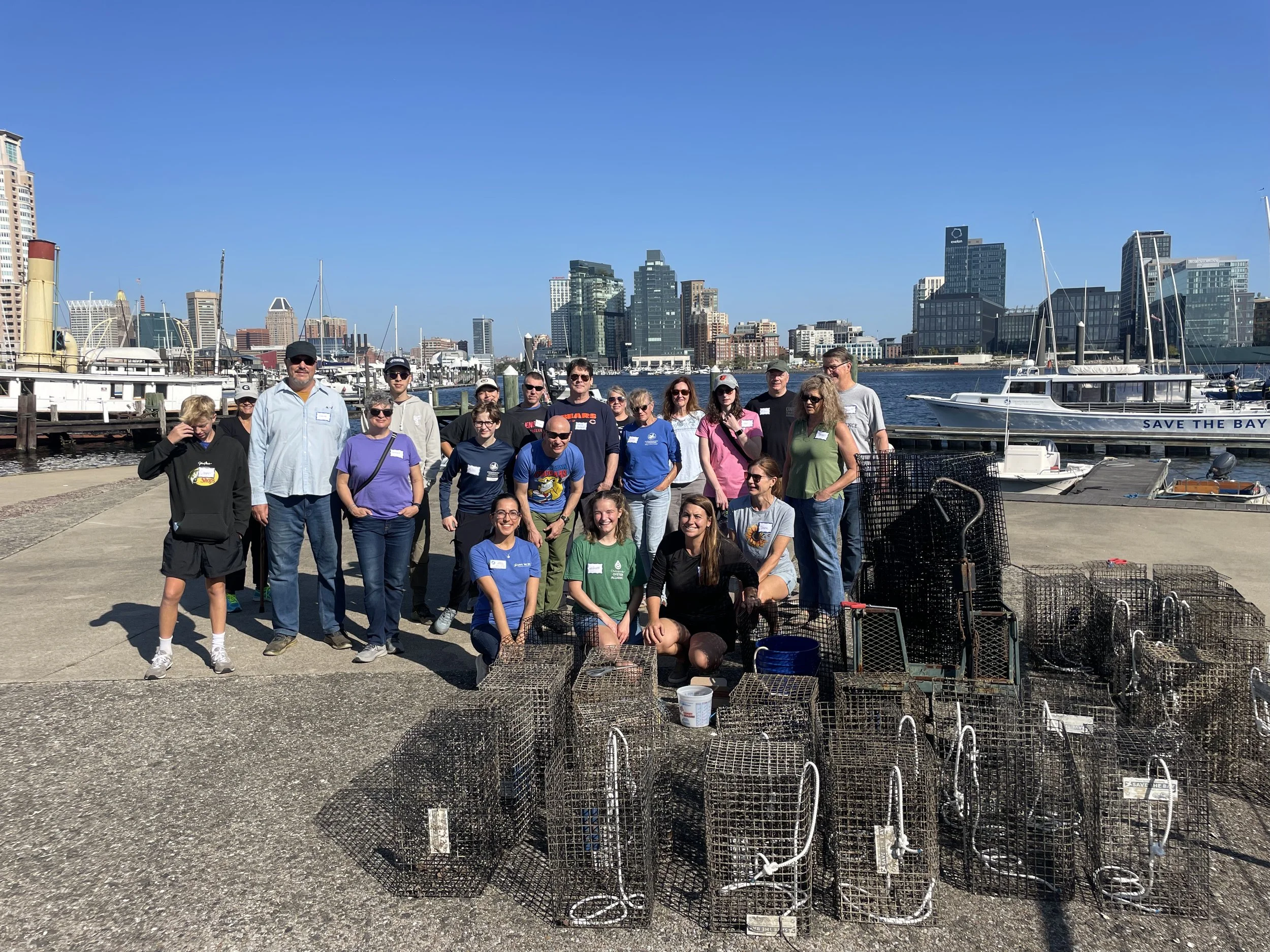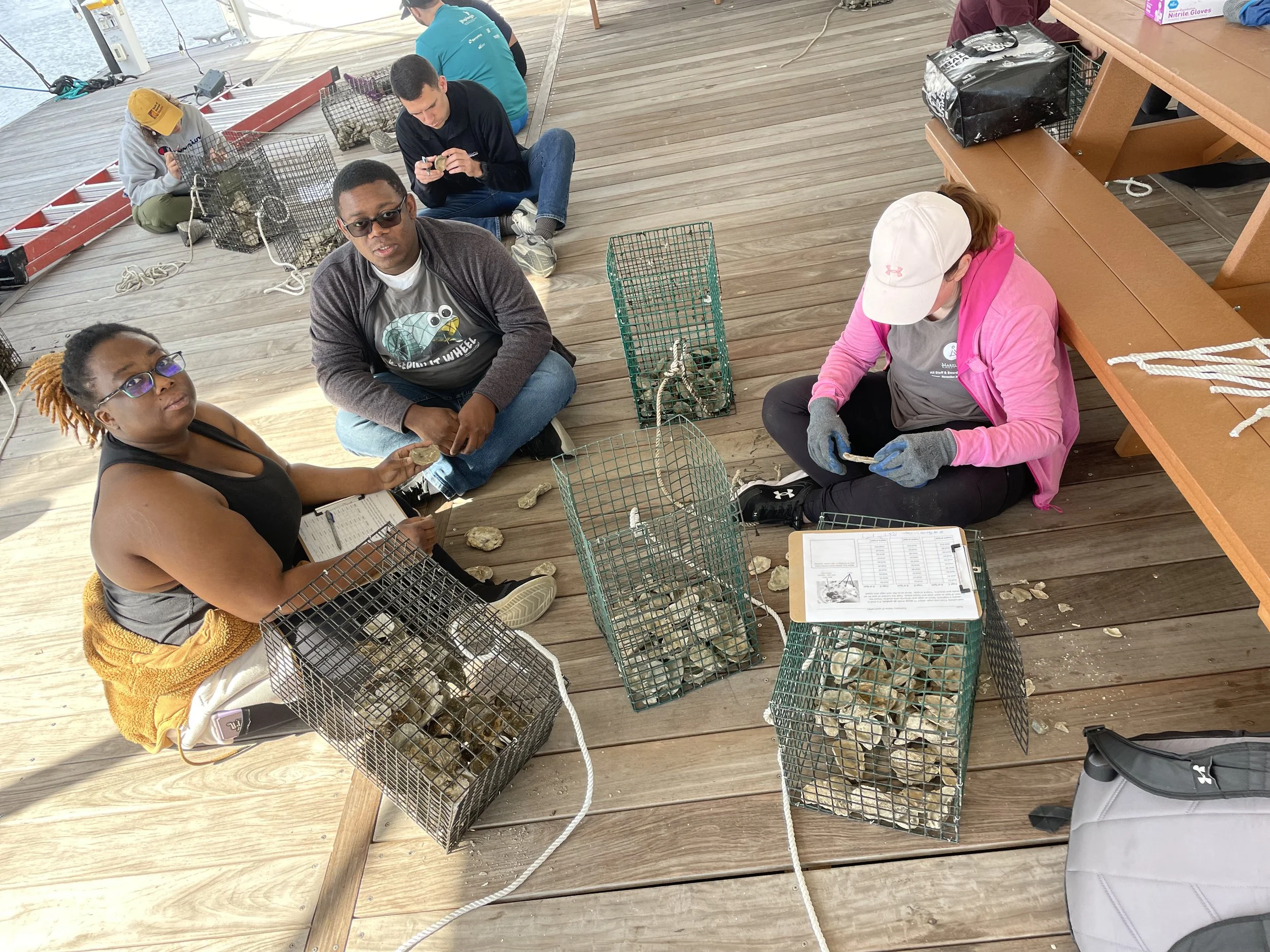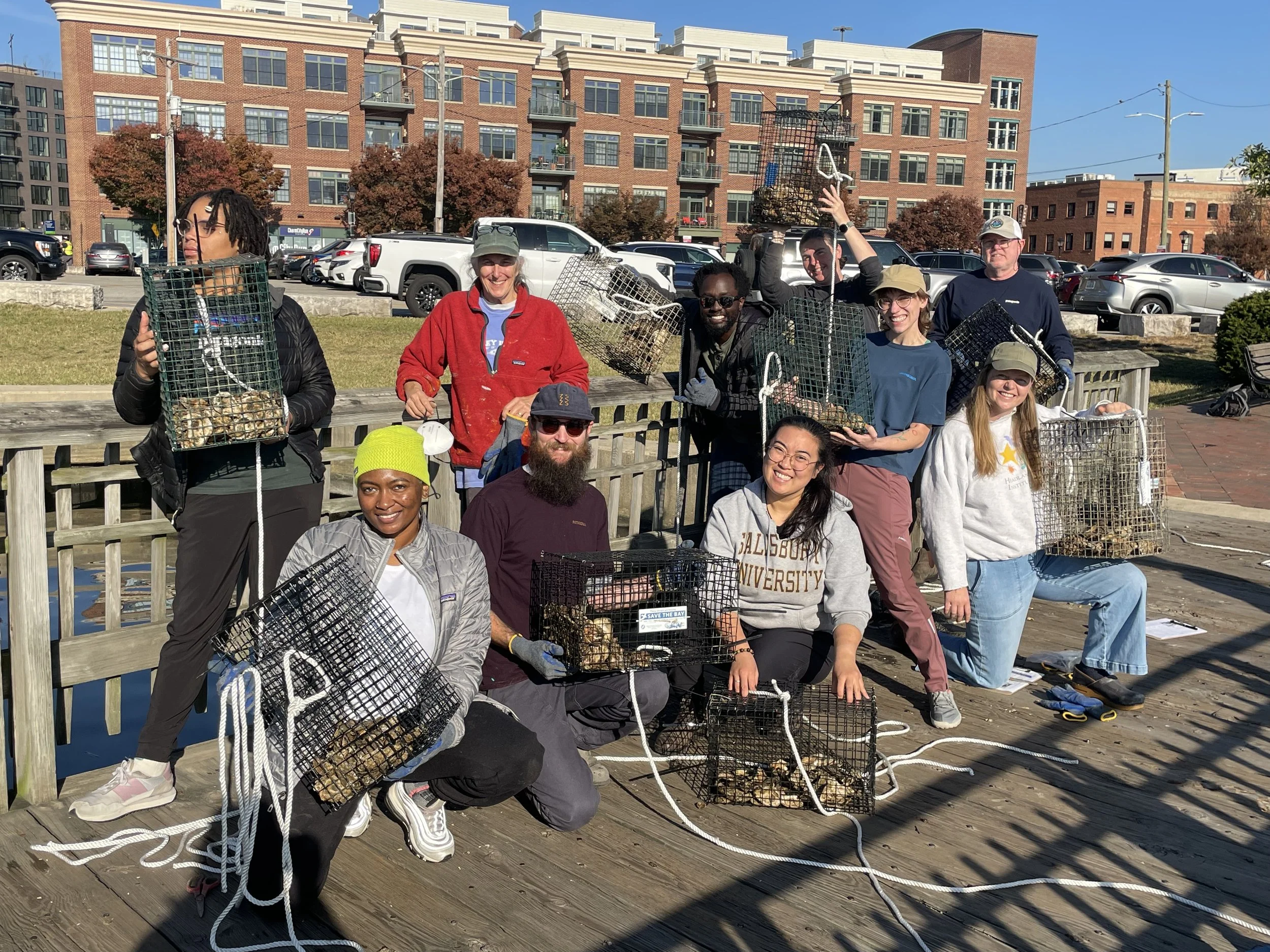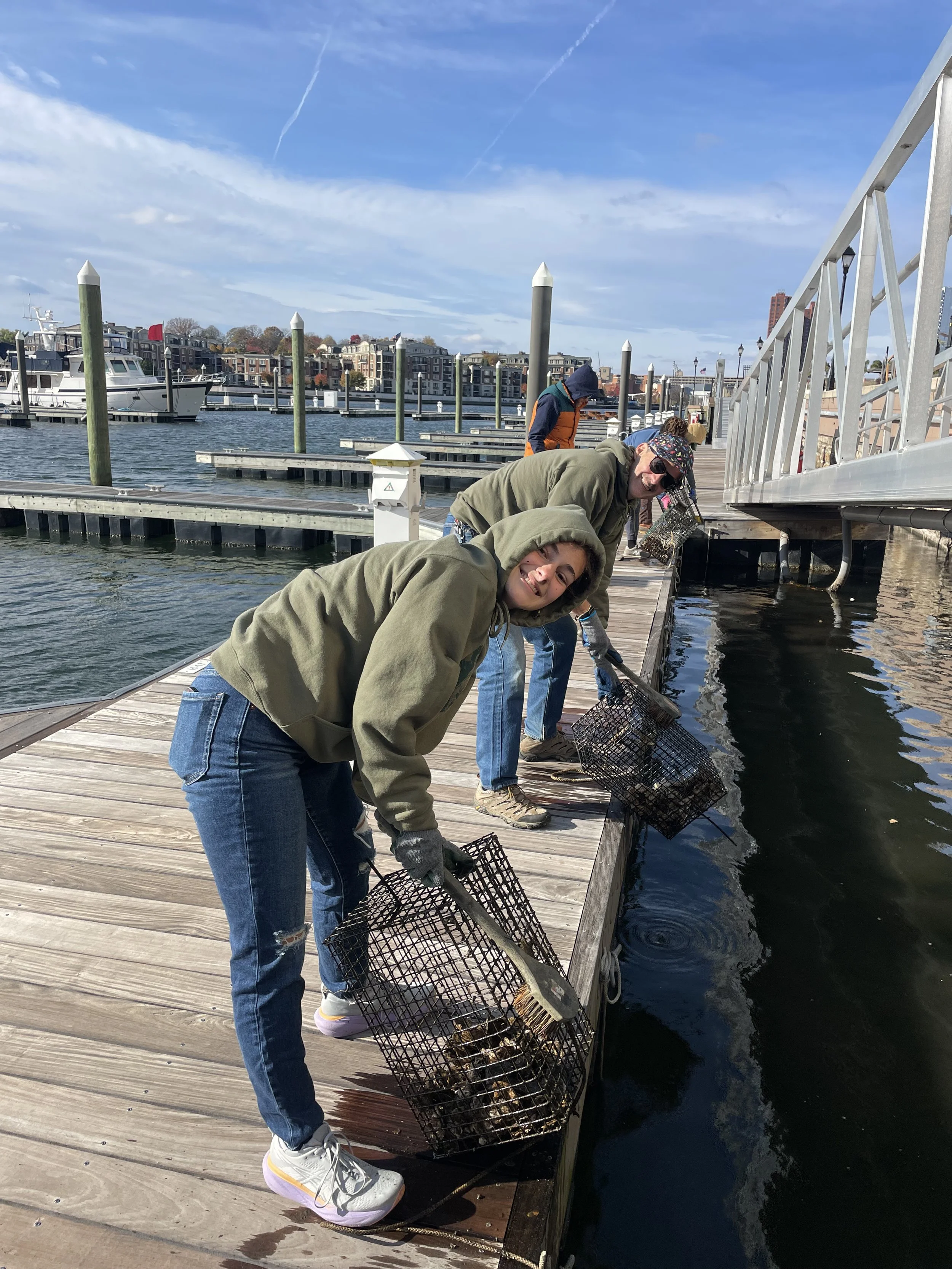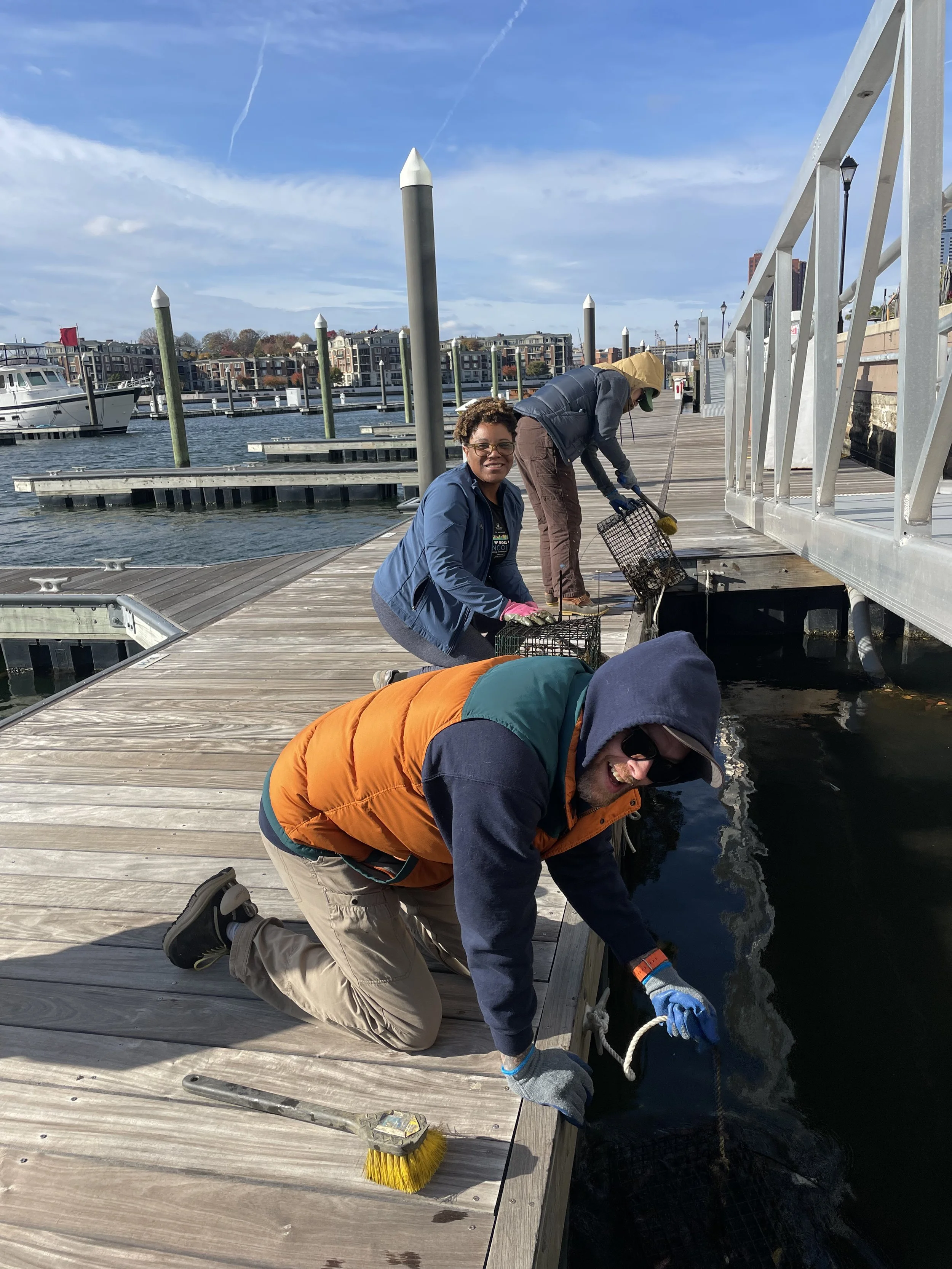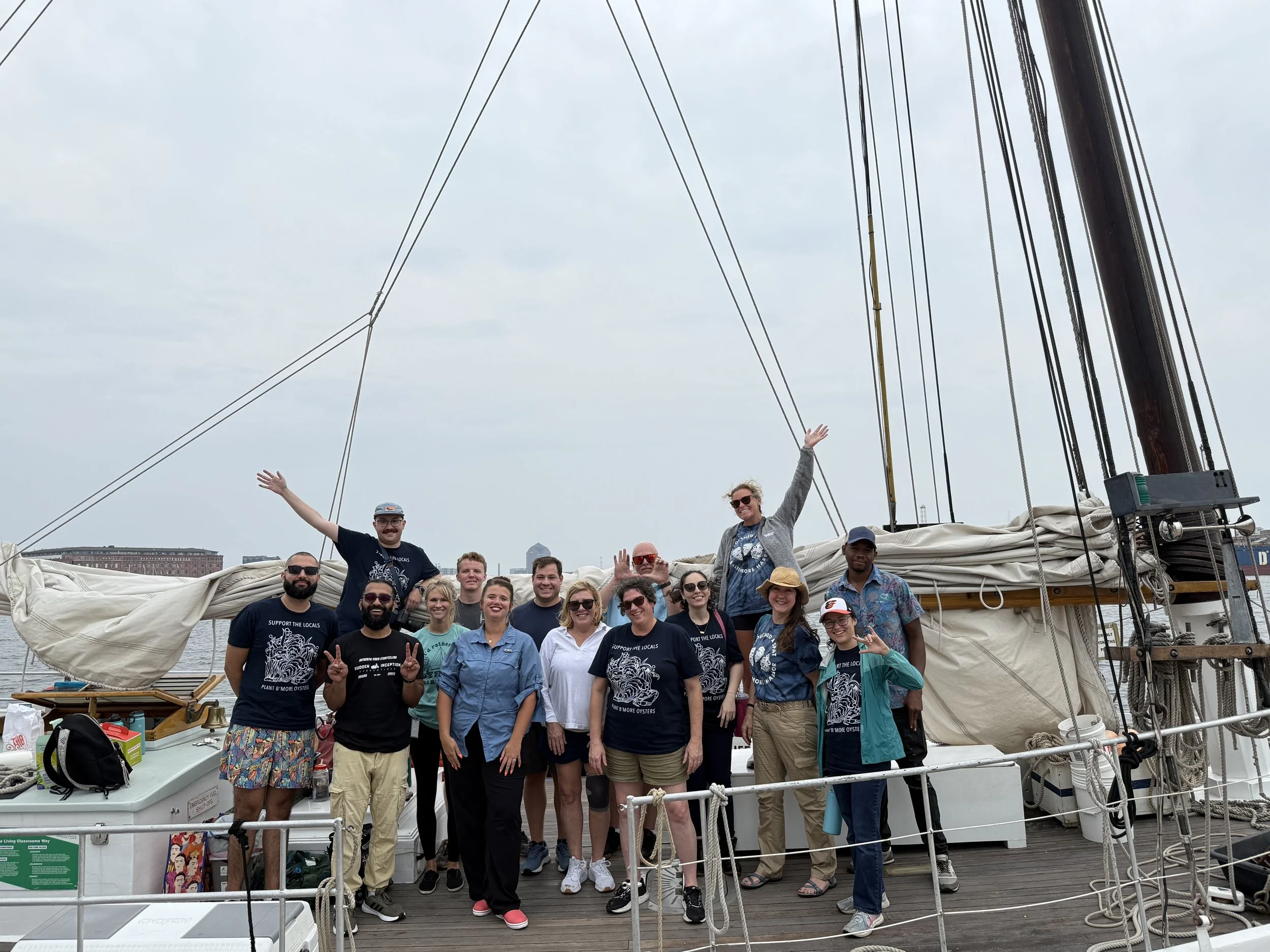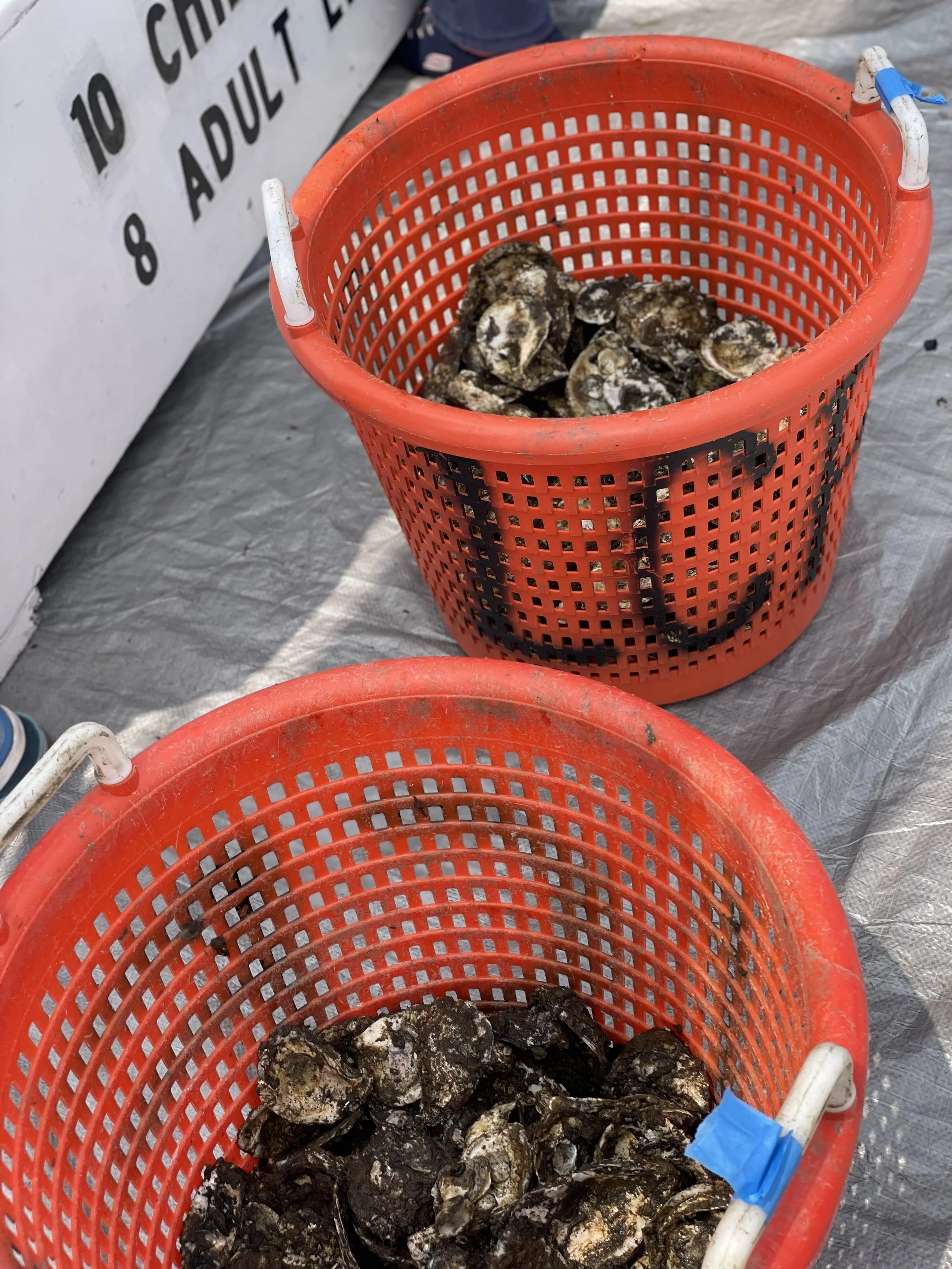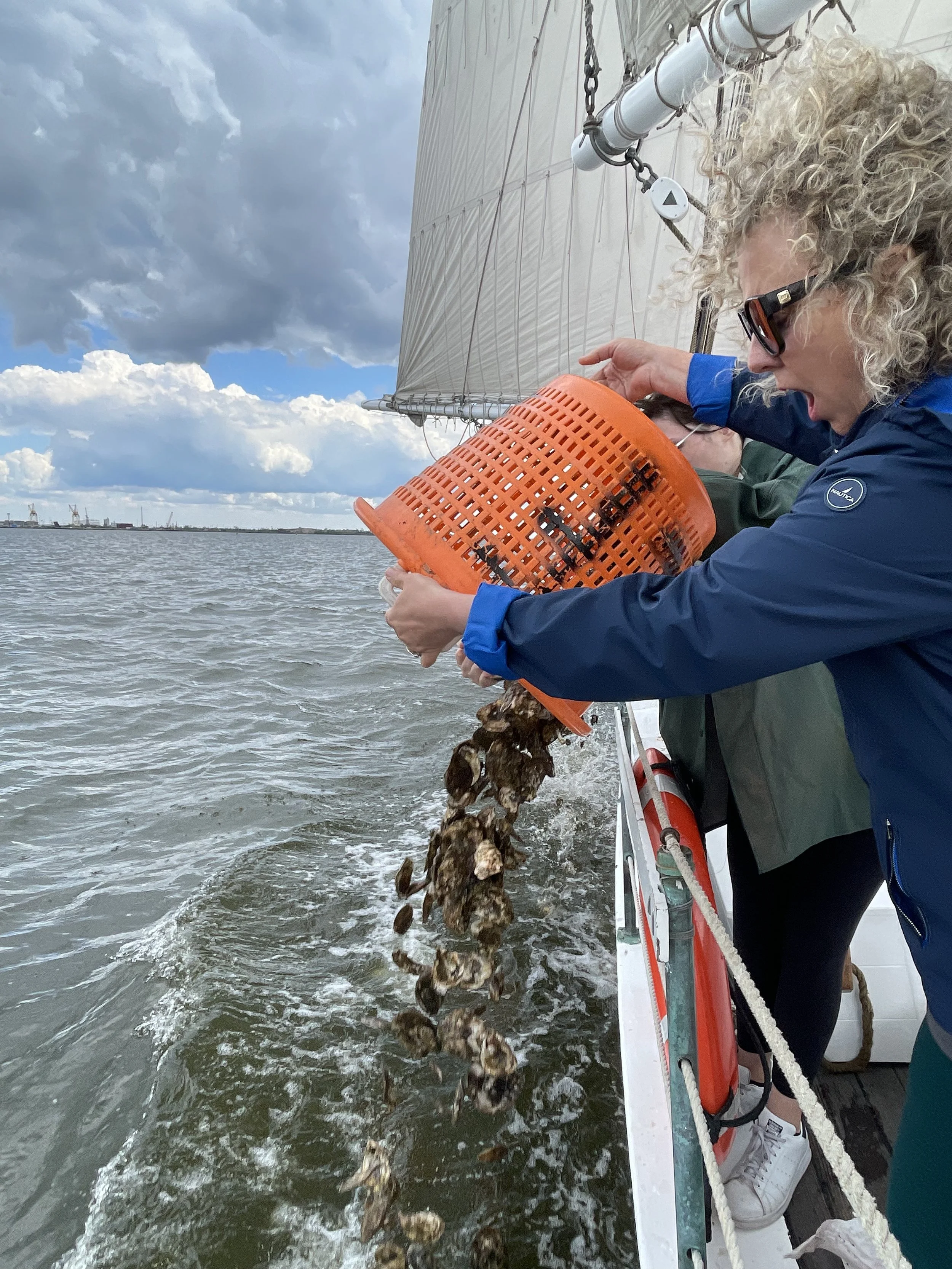The 3 Stages of Oyster Gardening
The Baltimore Oyster Partnership works to restore the local oyster population through our oyster gardening program. We work with volunteers, local businesses, and other non-profits to grow oysters that we will eventually plant at a protected reef, increasing the water quality benefits that these creatures bring to the Chesapeake Bay and Baltimore Harbor! For each oyster garden, we work with volunteers to help us with all 3 Stages of Oyster Gardening: installation, cleaning, and planting.
Want to see the recap for our 2024-2025 Oyster Gardening Season? Click here!
Stage 1: Installation
For an oyster gardener, Fall is Installation Season! This is when we install new oyster habitats across the Baltimore Harbor, referred to as oyster gardens. Each oyster garden has 20-60 cages in it, each of which contain over a hundred oyster shells. At an installation workshop, volunteers help us fill these cages with our spat-seeded oysters, tie them to their dock, and drop them into the harbor.
These oyster shells will grow baby oysters (spat) while living in the Baltimore Harbor for their first year of life. They will also help filter the water around them, improving water quality for the surrounding ecosystem while they grow!
Stage 2: Cleaning
While these oysters are growing in the Harbor, we also protect them by keeping their habitats clean. Without regular cleaning, mussels will grow rampant on the oyster cages and can inhibit oysters’ growth. We rely on our volunteers to join us for cage cleaning days where we pull up the habitats and scrub them clean of algae and other debris. This cleaning stage happens in the winter after installation is over.
Stage 3: Planting
The final stage in the cycle of oyster gardening is planting! This happens in the late spring and early summer, when our baby oysters have made it to maturity (one year old). Our volunteers join us at one of our oyster gardens to pull up our cages and transfer the oysters from their Harbor habitat. We’ll take them out on a historic ship, crewed by Living Classrooms, and bring them out to a protected oyster reef to live out the rest of their days.
This is also when we do our spat count- counting the number of baby oysters on each shell so we know how many we are planting at this reef.
Oysters can live up to 20 years in the Bay, and they’ll provide water quality benefits and habitat for other creatures during this time. Oysters are natural filter feeders and clean the water around them; they sequester carbon; and the calcium carbonate in their shells provide a buffer against acidity in the water.
Ready to get involved? Check out our upcoming volunteer opportunities and sign up here!


